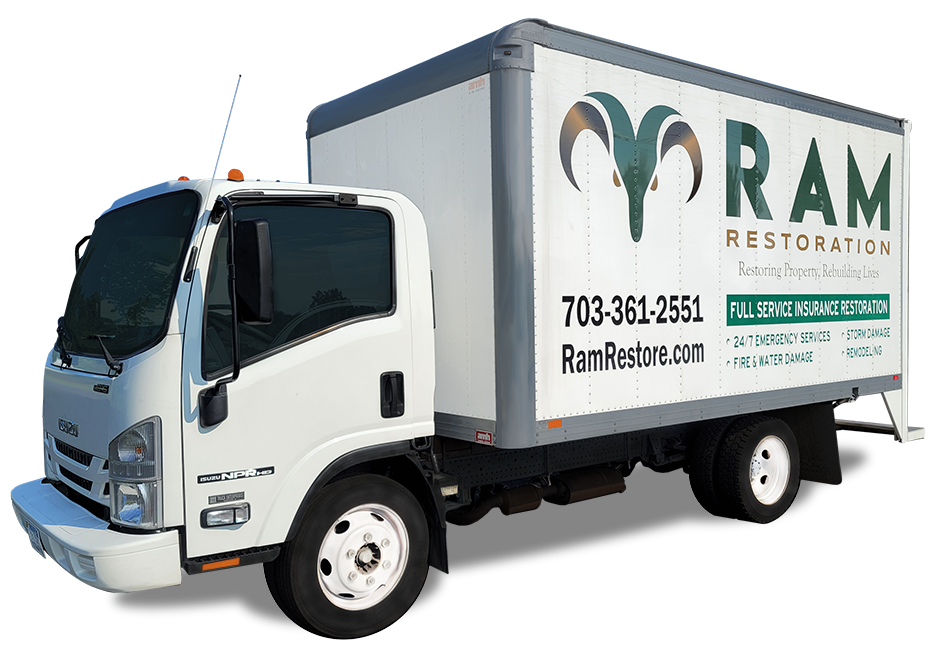Water damage can be a nightmare for property owners. Whether it’s from a burst pipe, a leaking roof, or a natural disaster, the consequences can be devastating. However, by handling the situation effectively and avoiding common mistakes, you can minimize the loss and ensure the safety of your property and yourself.
In this section, we will discuss the crucial steps you need to take when dealing with water damage. By understanding what not to do, you can ensure safety and minimize any potential loss. From acting quickly to mitigate damage to documenting the extent of the damage, we will provide you with valuable insights to navigate this challenging situation.
Key Takeaways:
- Act quickly to mitigate water damage and prevent further loss.
- Don’t neglect safety precautions to avoid accidents and injuries during the restoration process.
- Avoid using electrical appliances near water to minimize the risk of electrocution or fires.
- Don’t delay calling professionals, especially in complex situations or extensive damage.
- Document the extent of the water damage to facilitate insurance claims and the restoration process.
Act quickly to mitigate damage
When it comes to water damage, time is of the essence. Acting quickly is crucial to prevent further damage to your property and belongings. The longer water sits, the more extensive the damage can become. In this section, we will guide you through the initial steps you should take to mitigate the damage effectively.
1. Locate the source: Identifying the source of the water is the first step in mitigating damage. Is it a burst pipe, a leaking appliance, or a natural disaster? By determining the source, you can take targeted action to stop the water flow and prevent additional damage.
2. Shut off the water: If the water damage is caused by a plumbing issue, such as a burst pipe or a faulty appliance, locate the main water valve and shut off the water supply to your property. This will help minimize further flooding and damage.
3. Ensure safety: Before entering any areas affected by water, ensure your safety by turning off the electricity to prevent the risk of electrical shock. Use appropriate personal protective equipment, such as gloves and boots, to protect yourself from contamination or sharp objects in the water.
4. Remove standing water: Use buckets, mops, or a wet/dry vacuum to remove as much standing water as possible. This will help prevent additional damage to your flooring, walls, and furniture.
5. Salvage valuable items: Prioritize salvaging valuable items that are at risk of being damaged by water. Move them to a dry area or use waterproof coverings to protect them from further harm.
6. Increase ventilation: Open windows and use fans or dehumidifiers to promote airflow and aid in the drying process. This can help prevent the growth of mold and mildew, which thrive in damp environments.
Remember, acting quickly is key to mitigating the damage caused by water. By following these initial steps, you can minimize the impact and protect your property from further harm.
Continue reading to learn more about the safety precautions you should take when dealing with water damage.
Don’t neglect safety precautions
When dealing with water damage, it’s crucial to prioritize your safety above all else. Neglecting safety precautions can lead to accidents and injuries during the restoration process. To ensure your well-being, follow these essential safety measures:
1. Turn Off the Power
Before you start any water damage cleanup, always disconnect the power supply to the affected area. Water and electricity do not mix well, and handling electrical appliances or devices can be hazardous. Locate the main power switch or circuit breaker and turn it off to avoid the risk of electric shock.
2. Watch Out for Slippery Surfaces
When water seeps into your home or property, it can create slippery surfaces that increase the likelihood of slips and falls. Exercise caution when walking on wet areas and use non-slip footwear to maintain stability. Additionally, keep your eyes peeled for any objects or debris that may pose a tripping hazard.
3. Use Protective Equipment
When engaging in water damage cleanup, it’s essential to protect yourself from potential health risks. Wear appropriate personal protective equipment (PPE) such as gloves, masks, goggles, and rubber boots. These items will shield you from harmful contaminants and prevent skin irritation or respiratory issues.
4. Beware of Structural Weakness
Water damage can weaken the structural integrity of your property. Be cautious when entering areas that have been significantly affected, as floors and walls may be compromised. If you notice any signs of structural damage, such as sagging ceilings or buckling walls, evacuate the area immediately and seek professional assistance.
5. Avoid Coming into Direct Contact with Contaminated Water
Water damage often involves the presence of contaminated water, which can contain bacteria, viruses, and other harmful substances. Avoid direct contact with the water and always assume it is contaminated. If you must handle it, use protective gloves and, if possible, a face mask to minimize the risk of infection.
By adhering to these safety precautions, you can navigate the water damage restoration process with confidence and minimize the risk of accidents or injuries. Remember, your safety and well-being should always be a top priority.
| Common Safety Precautions for Water Damage Restoration |
|---|
| Turn off the power to prevent electric shock |
| Watch out for slippery surfaces to prevent falls |
| Use protective equipment such as gloves, masks, and goggles |
| Beware of structural weakness and potential collapses |
| Avoid direct contact with contaminated water |
Avoid using electrical appliances near water
In the midst of water damage, it’s crucial to prioritize your safety. One particular hazard to avoid is using electrical appliances near water. Water is a conductor of electricity, which means that combining the two can have disastrous consequences. In fact, using electrical appliances near water can lead to electrocution or even start fires.
When water infiltrates your home or property, it’s essential to be mindful of the potential risks associated with electrical appliances. To protect yourself and others, it’s important to adhere to the following guidelines:
- Do not operate any electrical appliances while standing in or near standing water. This includes items such as hairdryers, laptops, televisions, or any other electronic devices.
- Ensure that all electrical outlets and switches are turned off before attempting any cleanup or restoration activities involving water.
- If you suspect that electrical wiring or outlets have come into contact with water, do not touch them. Instead, immediately contact a qualified electrician to assess the situation.
When dealing with water damage, it’s essential to exercise caution and prioritize safety at all times. By avoiding the use of electrical appliances near water, you can significantly reduce the risk of accidents, injuries, and further damage to your property.
If you need to continue using electrical appliances during the restoration process, consider using battery-powered alternatives instead. This will help ensure your safety and prevent any potential electrical mishaps.
Remember, your well-being and the safety of others should always come first when dealing with water damage. Take the necessary precautions to avoid the dangers associated with electrical appliances and make informed decisions for an effective restoration process.
| Appliances to Avoid Near Water | Safety Alternatives |
|---|---|
| Hairdryer | Use a towel or air-dry naturally |
| Laptop/Computer | Switch to a battery-powered device |
| Television | Avoid using until water damage is resolved |
| Power tools | Wait until the affected area is completely dry before using |
Don’t delay calling professionals
When faced with water damage in your home, it can be tempting to roll up your sleeves and tackle the issue yourself. However, there are certain situations where it is essential to delay any DIY attempts and instead seek the expertise of professionals. Calling in the professionals promptly can make a significant difference in the outcome of the restoration process.
So, when exactly should you delay your DIY efforts and reach out to the experts? Here are a few scenarios that warrant immediate professional intervention:
- If the water damage is caused by a sewage backup, it’s crucial to avoid any contact with the contaminated water. Sewage water contains harmful bacteria and pathogens that can pose serious health risks. Professional water damage restoration specialists have the necessary equipment and expertise to safely handle and sanitize these situations.
- When the water damage is extensive, affecting multiple rooms or large areas of your property, it can quickly become overwhelming to handle on your own. Professionals have the resources and manpower to effectively address and mitigate the damage, ensuring a thorough restoration process.
- In cases where the water damage involves structural issues such as sagging ceilings, warped floors, or compromised walls, the expertise of professionals is crucial. They can accurately assess the extent of the damage and take appropriate measures to stabilize the structure, preventing further deterioration.
Delaying the call for professional help in these scenarios can lead to more severe damage, increased restoration costs, and potential safety hazards. By reaching out to experts trained in water damage restoration, you can ensure that your property is restored efficiently and effectively.
| Scenario | When to call professionals |
|---|---|
| Sewage backup | Immediately – bacteria and pathogens pose health risks |
| Extensive damage | When the damage affects multiple rooms or large areas |
| Structural issues | If the damage involves sagging ceilings, warped floors, or compromised walls |
Remember, water damage restoration professionals have the knowledge, experience, and specialized equipment required to handle even the most challenging situations. By putting their expertise to work, you can ensure a smoother and more successful recovery process.
Call us today at (703) 361-2551 for professional, emergency restoration and cleanup services!
Don’t forget to document the damage
When dealing with water damage, one of the most crucial steps you need to take is documenting the extent of the damage. Not only does documentation help with insurance claims, but it also plays a vital role in the restoration process. By effectively capturing and recording the evidence of the damage, you can ensure a smoother and more accurate assessment of the situation.
To document the water damage, start by taking clear and detailed photographs of all affected areas. Make sure to capture both the overall view and close-up shots to showcase the extent of the damage. This will provide visual evidence that supports your insurance claim and helps the restoration experts understand the severity of the situation.
In addition to photographs, keep a written record of the damage. Describe each area affected, including any visible signs such as discoloration, mold growth, or structural issues. Note down the date and time of the incident, as well as any relevant details about the source of the water damage, such as a burst pipe or heavy rainfall.
It’s also important to include any additional relevant information in your documentation. This could include invoices or receipts for emergency repairs or professional services you had to engage to address the water damage. These documents can be crucial when it comes to reimbursement and demonstrating the expenses incurred due to the incident.
Remember to keep all your documentation in a safe place, both physical copies and digital backups. This will ensure that you have easy access to the necessary evidence when communicating with your insurance company and restoration professionals.
| Steps to Document Water Damage: |
|---|
| 1. Take Clear and Detailed Photographs |
| • Capture overall views and close-up shots |
| • Show areas affected by water damage |
| 2. Keep a Written Record |
| • Describe each affected area in detail |
| • Note down date, time, and source of water damage |
| 3. Include Additional Information |
| • Keep invoices and receipts for repairs and services |
| 4. Safely Store Documentation |
| • Keep both physical and digital copies |
Avoid ignoring hidden water sources
When it comes to water damage, the visible signs are often just the tip of the iceberg. Ignoring hidden water sources can have serious consequences, ranging from mold growth to structural issues. It’s essential to be proactive and address these hidden sources as soon as possible.
But what exactly are hidden water sources? Let’s take a look at some common culprits:
- Leaky pipes: Small leaks behind walls, under sinks, or in the ceiling can go unnoticed for a long time, causing water to seep into the surrounding areas.
- Roof leaks: Damaged shingles or gaps in the roof can allow water to infiltrate your home, leading to water damage in the attic or upper floors.
- Foundation cracks: Cracks in the foundation can allow water to seep into your basement or crawl space, causing dampness and potential flooding.
- Plumbing issues: Malfunctioning appliances, such as washing machines or dishwashers, can leak water and cause hidden damage beneath the surface.
These hidden water sources may not be immediately evident, but their effects can be far-reaching. Mold can start growing within 24 to 48 hours, posing health risks to you and your family. Additionally, prolonged exposure to water can weaken the structure of your property, leading to costly repairs in the long run.
It’s crucial to address hidden water sources promptly and effectively.
How can you detect hidden water sources? Look for signs such as musty odors, unexplained moisture, or water stains on ceilings or walls. Hiring a professional water damage restoration service can also help with detecting and resolving hidden water issues.
Remember, prevention is key. Routine maintenance, regular inspections, and prompt repairs can help you identify and tackle hidden water sources before they cause significant damage.
By staying vigilant and taking immediate action, you can protect your property from hidden water sources and minimize the risk of long-term water damage.
| Hidden Water Sources | Potential Consequences |
|---|---|
| Leaky pipes | Mold growth, water damage to surrounding areas |
| Roof leaks | Attic or upper floor water damage, compromised structural integrity |
| Foundation cracks | Basement or crawl space flooding, dampness, structural damage |
| Plumbing issues | Hidden water damage, mold growth, potential appliance damage |
Conclusion
In conclusion, effectively handling water damage requires taking the right steps and avoiding common mistakes. Acting quickly is crucial to mitigate further damage to your property. Remember to prioritize safety throughout the restoration process to prevent accidents and injuries.
While there may be a temptation to tackle water damage on your own, certain situations require the expertise of professionals. Don’t hesitate to seek professional assistance when needed to ensure a thorough restoration and prevent long-term issues.
Documentation is key when it comes to insurance claims and the restoration process. Be sure to document the extent of the water damage accurately, capturing all necessary evidence. This will facilitate the claims process and help prevent any disputes with insurance companies.
Lastly, don’t ignore the presence of hidden water sources. Even if the damage isn’t immediately visible, hidden water sources can lead to mold growth and structural issues over time. Take the time to identify and address any hidden water sources to prevent further damage and maintain the integrity of your property.
FAQ
What are the crucial steps to take when dealing with water damage?
When dealing with water damage, it is important to act quickly, prioritize safety, document the damage, avoid using electrical appliances near water, and not neglect to call professionals when necessary.
Why is it essential to act quickly to mitigate water damage?
Acting quickly helps prevent further damage to your property. By promptly addressing the issue, you can minimize the extent of the damage and reduce the overall cost of restoration.
What safety precautions should I take when dealing with water damage?
When handling water damage, ensure your safety by turning off the power source, wearing protective gear, and avoiding any contact with contaminated water to prevent potential health risks.
Why should I avoid using electrical appliances near water during water damage incidents?
Water is a conductor of electricity, and using electrical appliances near water can result in electrocution or fires. It is important to prioritize safety and refrain from using any electrical devices until the situation has been properly addressed.
When should I call professionals for water damage restoration?
While you may be tempted to handle water damage on your own, it is crucial to call professionals in certain scenarios. These include major flooding, sewage backup, or when structural integrity is compromised. Professionals have the expertise and equipment to effectively address these situations.
Why is it important to document the extent of water damage?
Documenting the damage is essential for insurance claims and the restoration process. It provides evidence of the loss suffered and helps ensure you receive proper compensation from your insurance provider. Additionally, it assists professionals in developing an effective restoration plan.
What are some common hidden water sources that should not be ignored?
Common hidden water sources include leaky pipes, roof leaks, faulty plumbing, and condensation buildup. Ignoring these sources can lead to further damage, mold growth, and compromised structural integrity. It is vital to address hidden water sources promptly to prevent additional issues.







